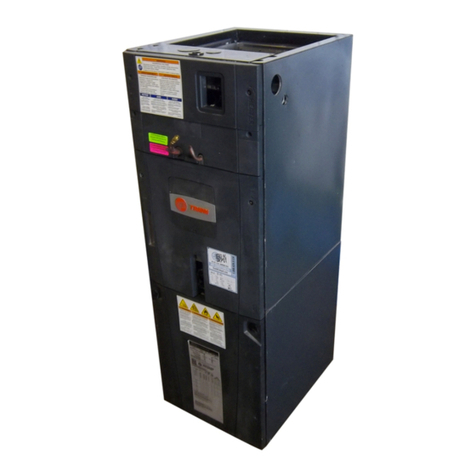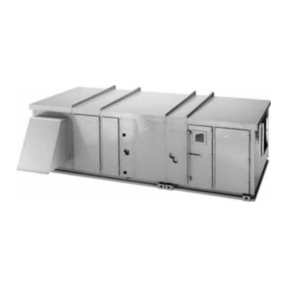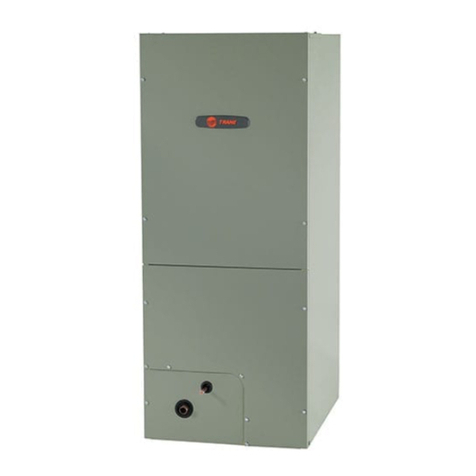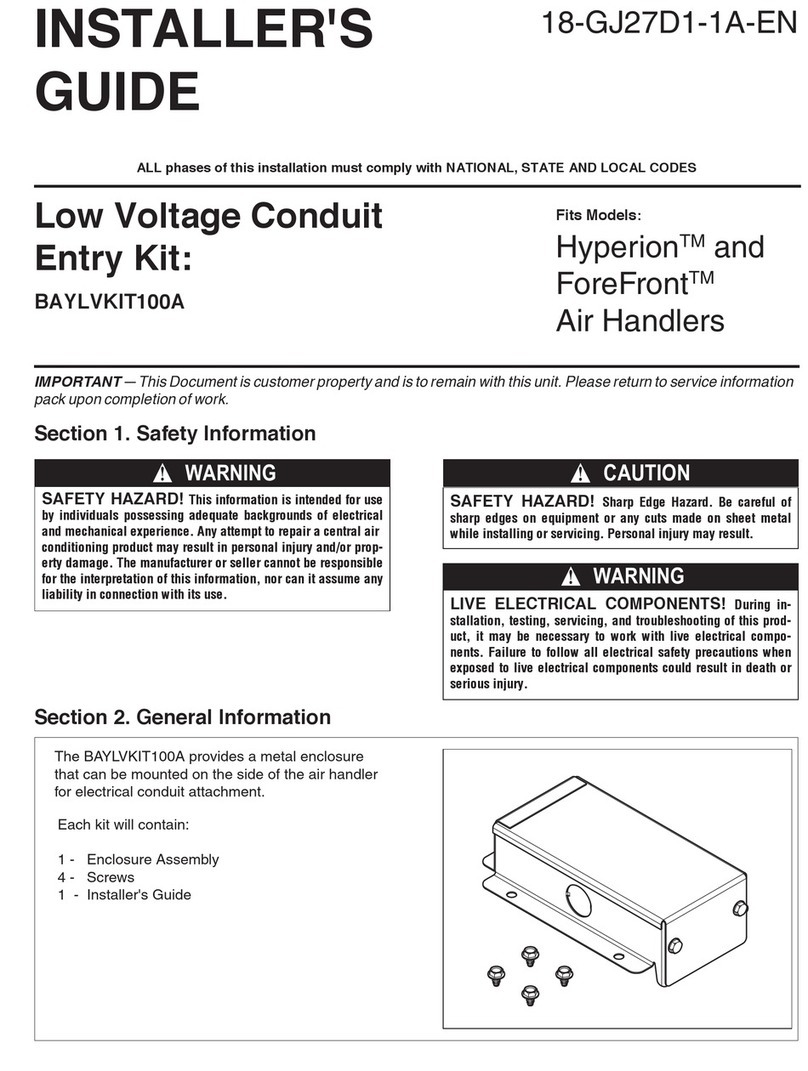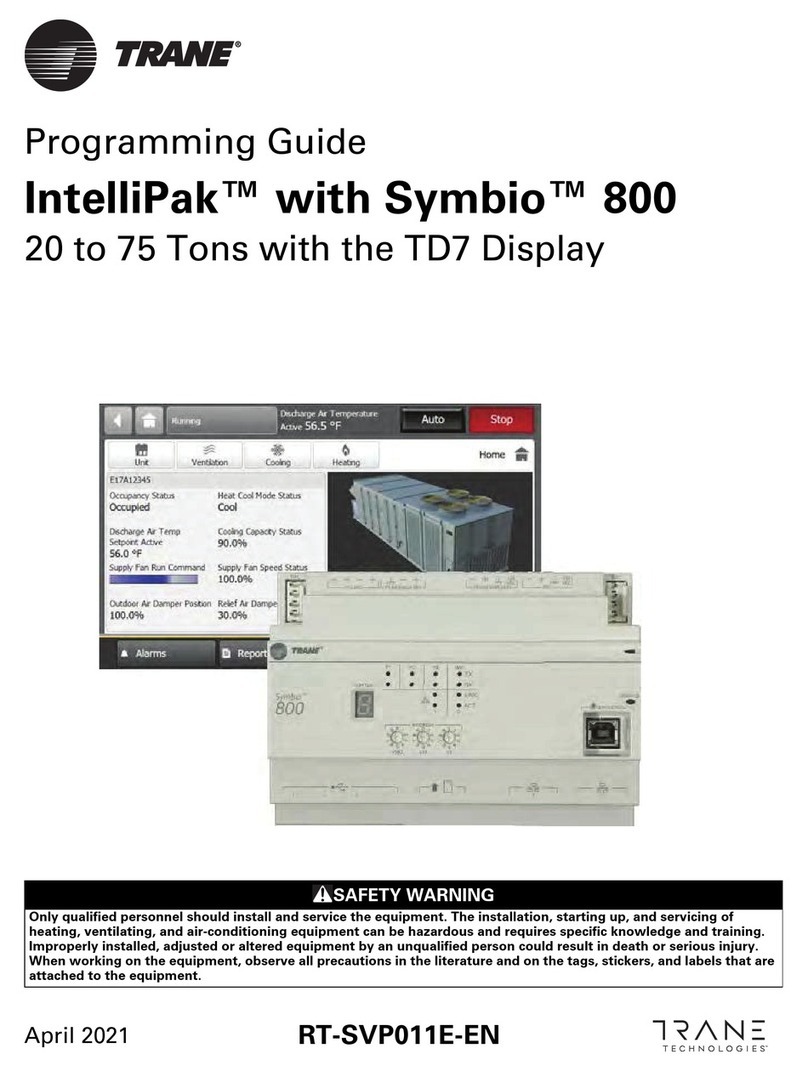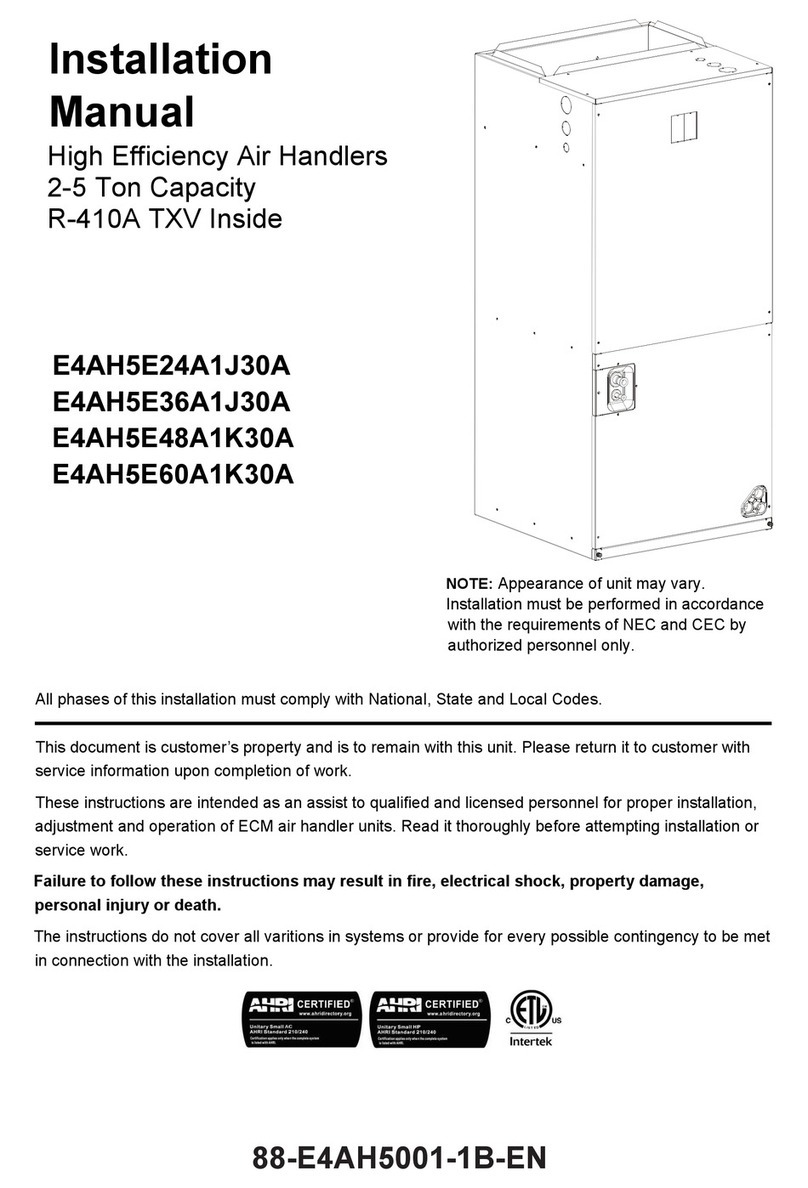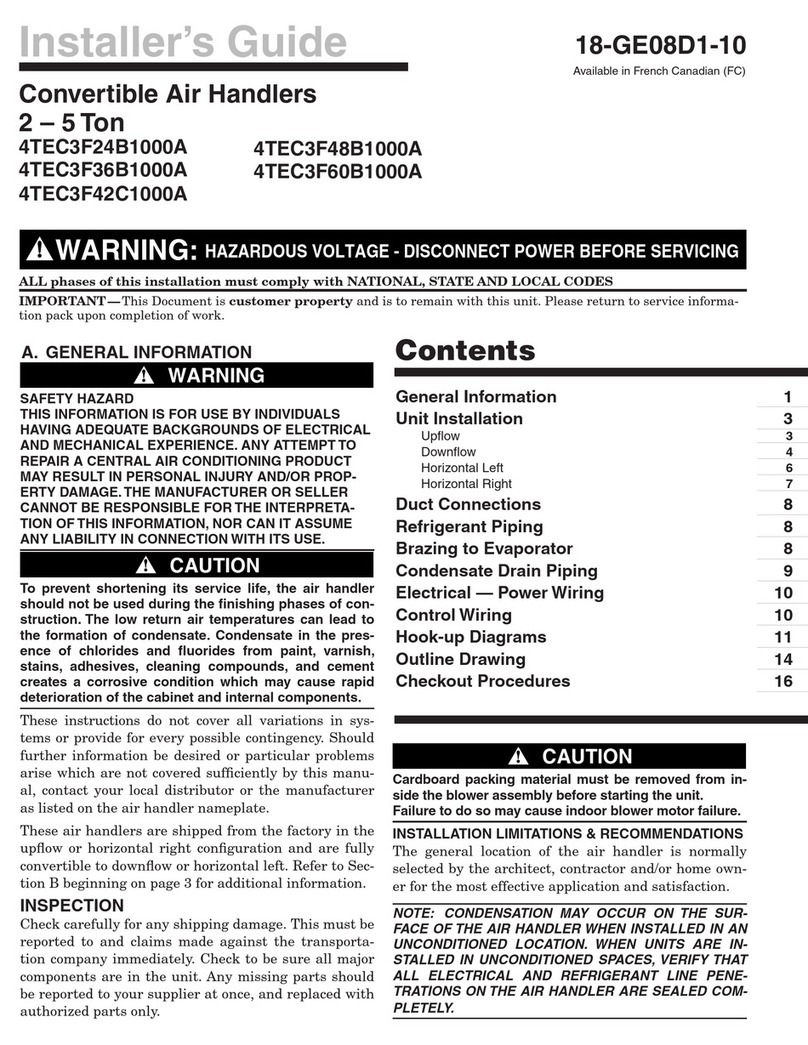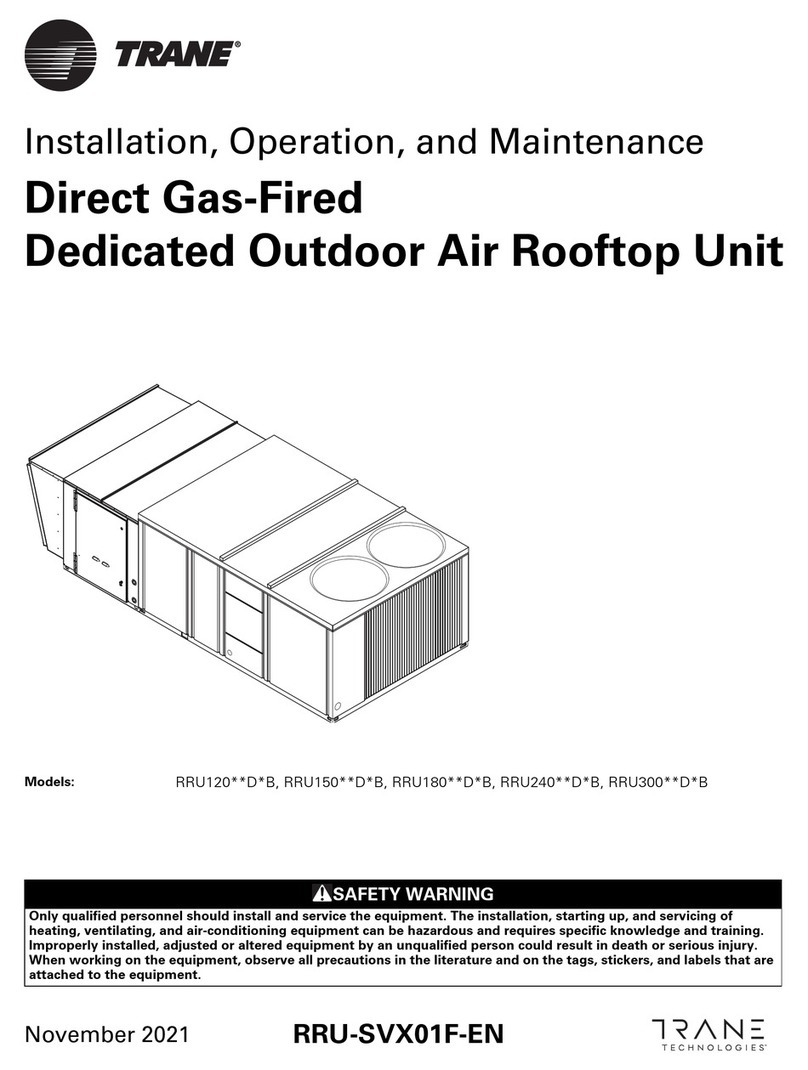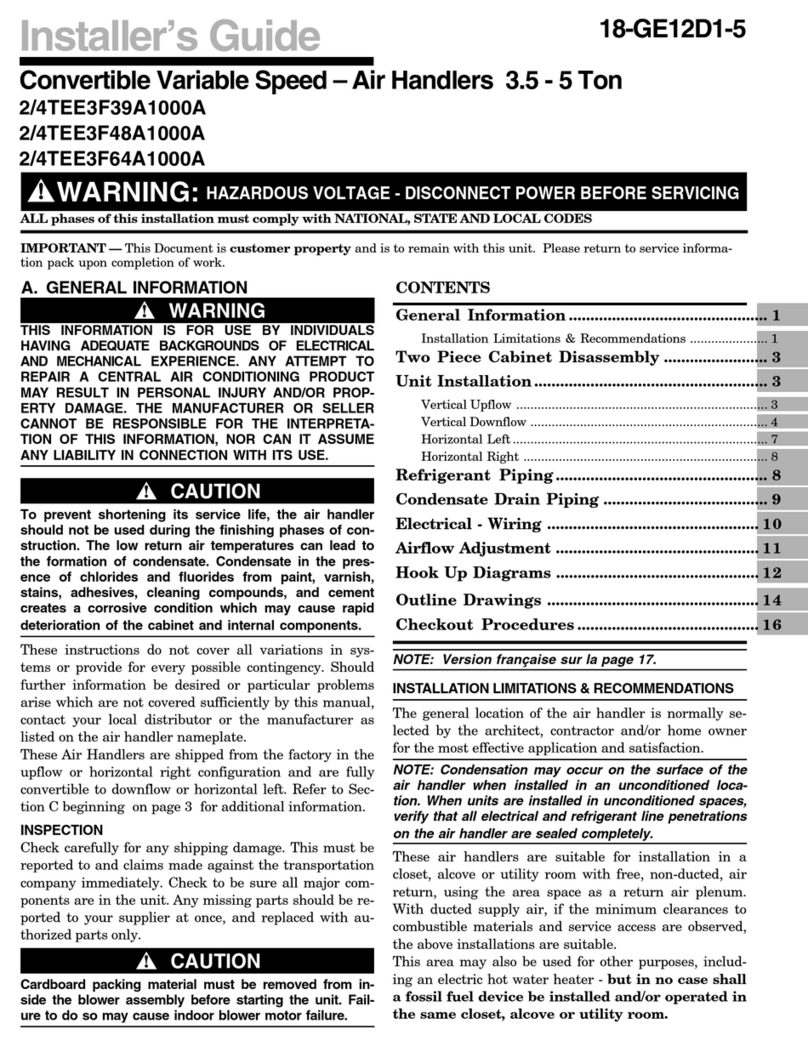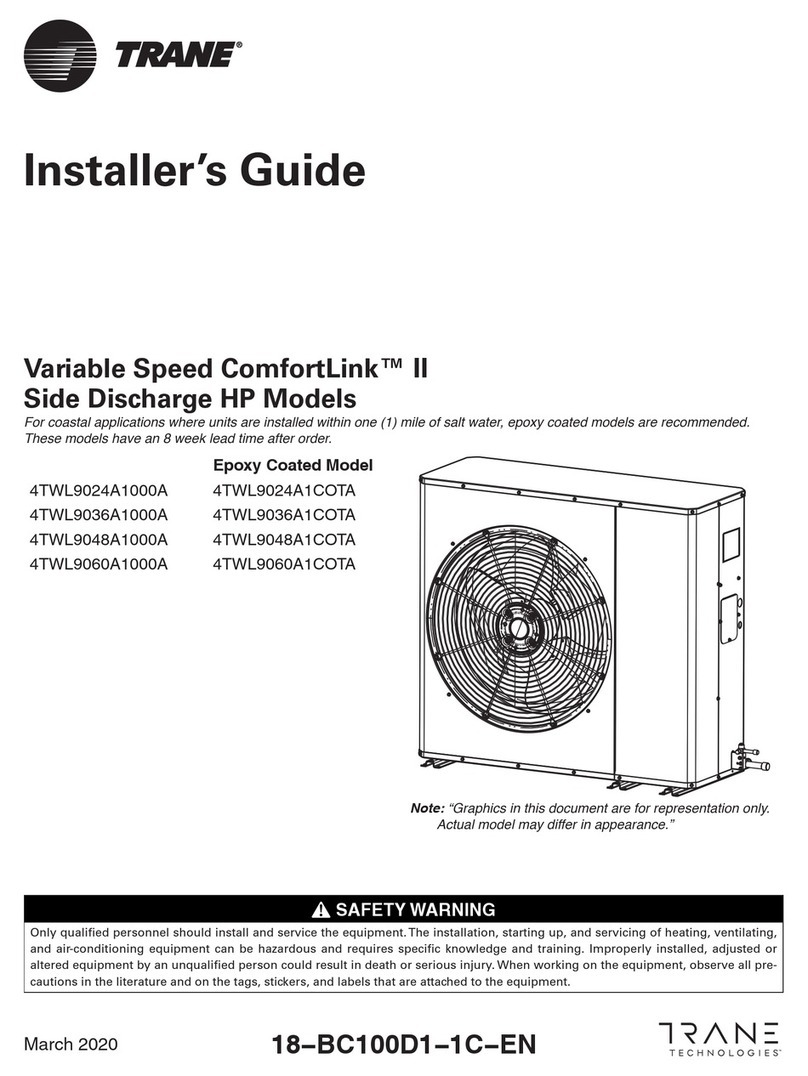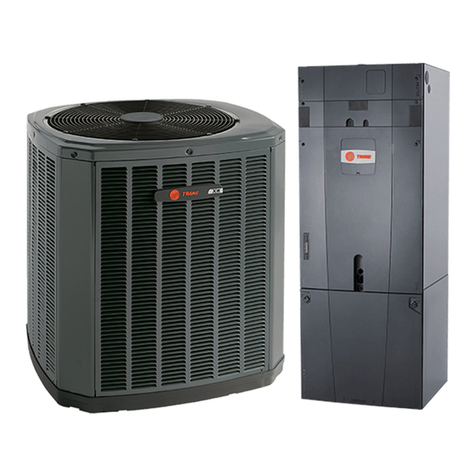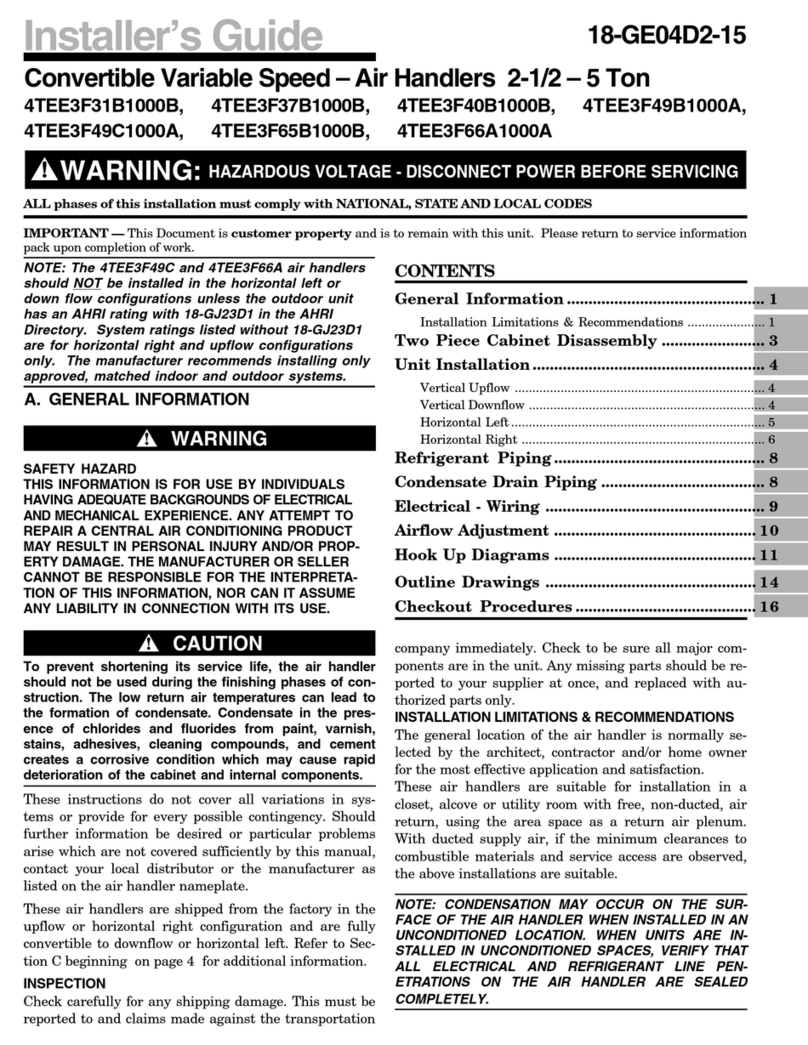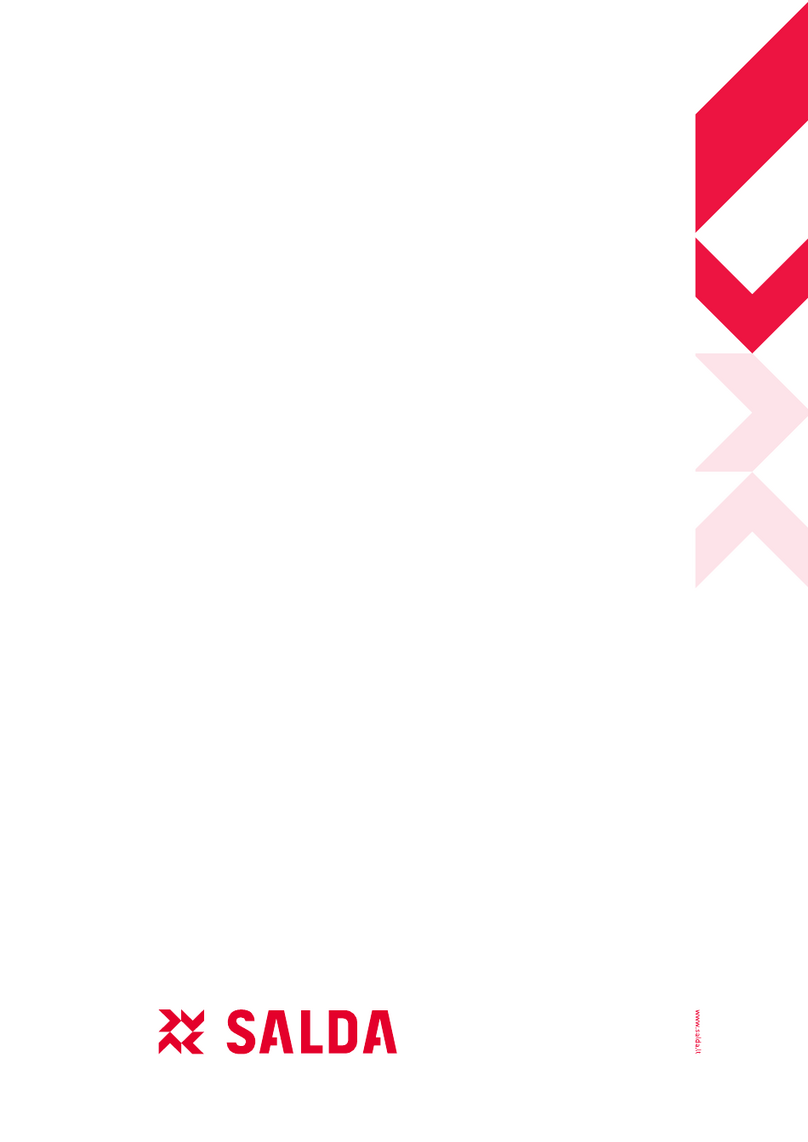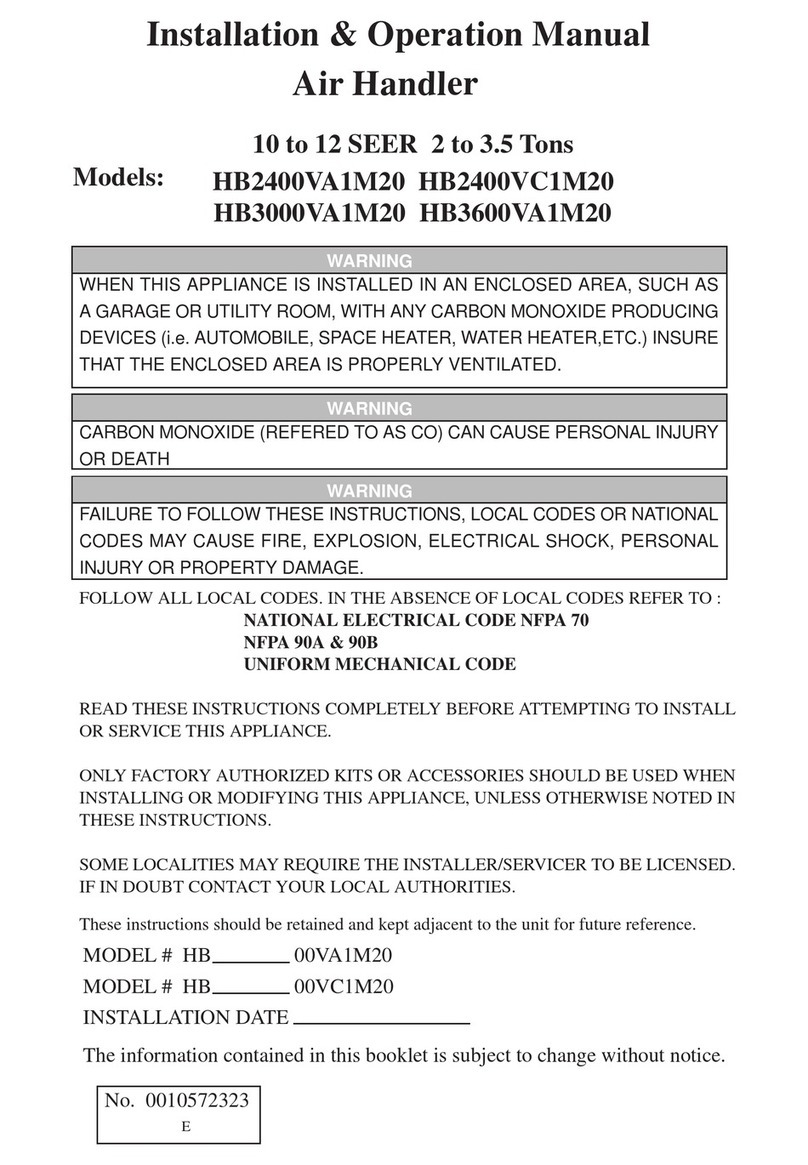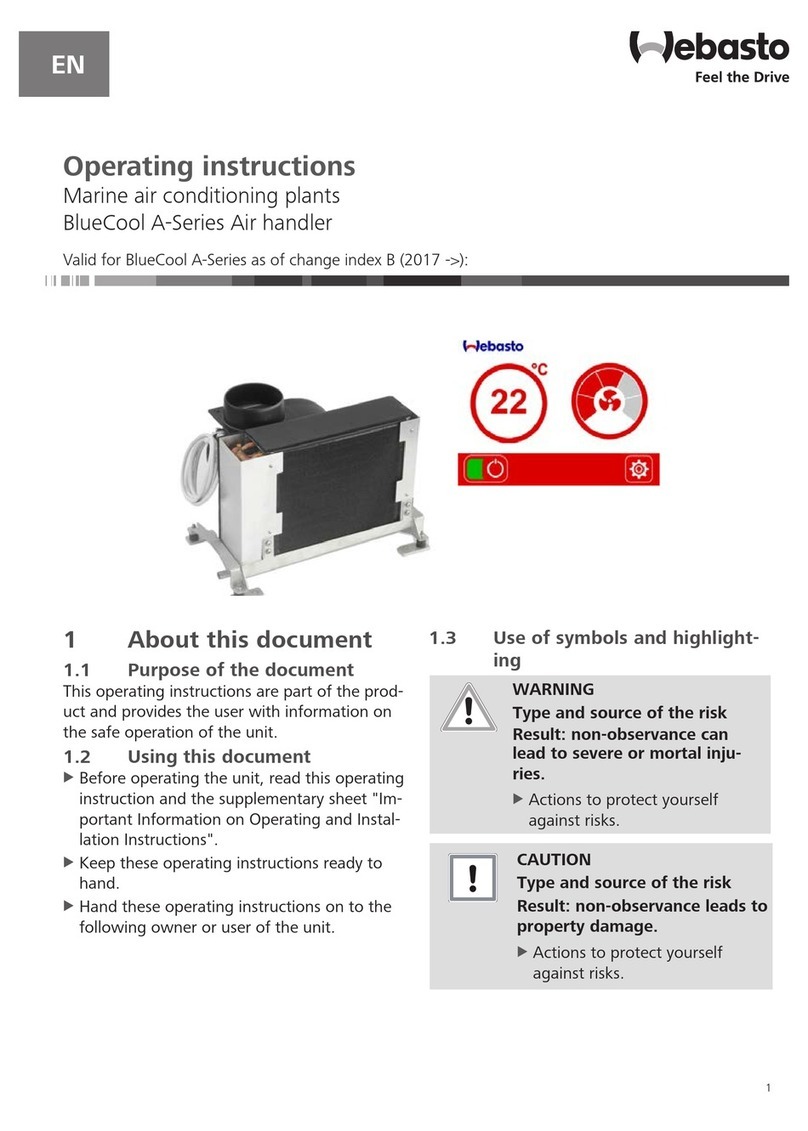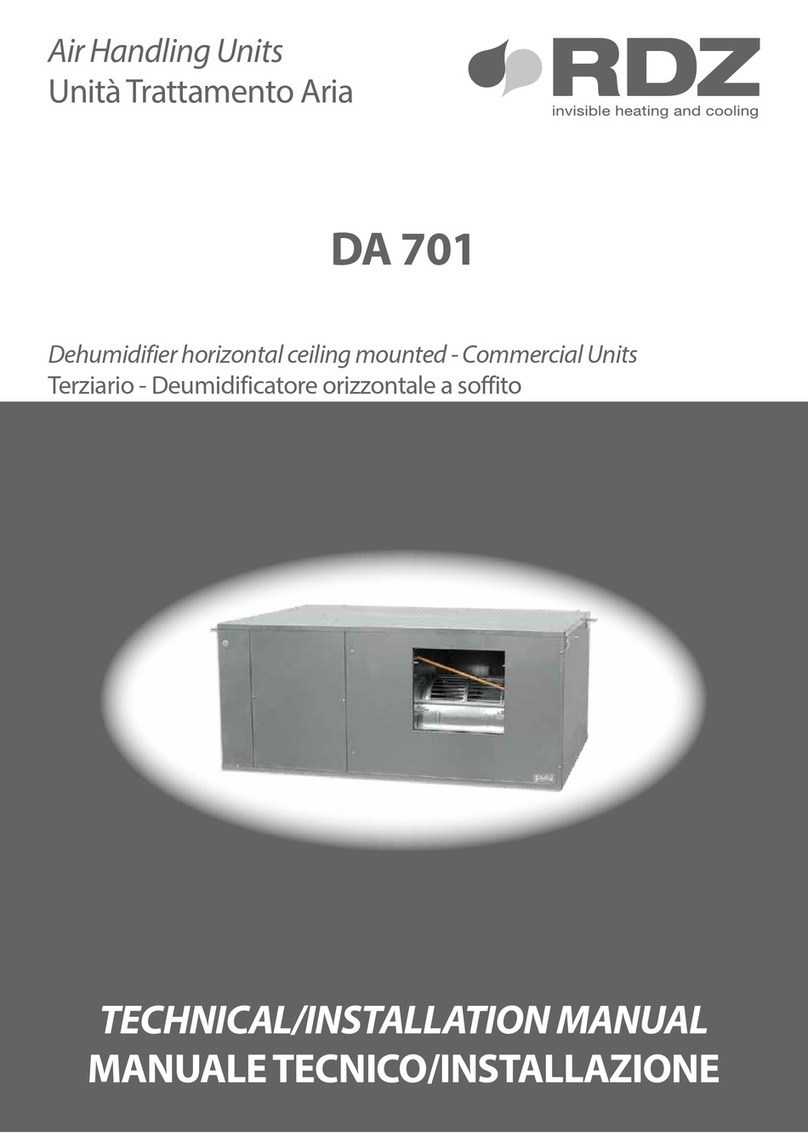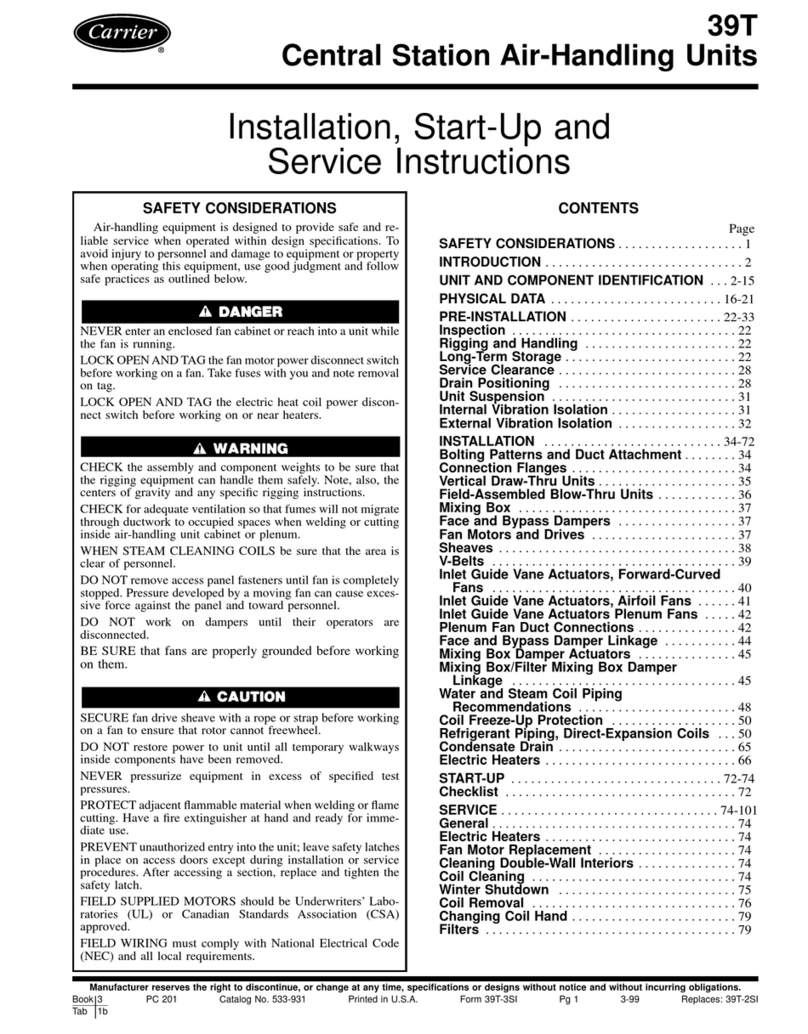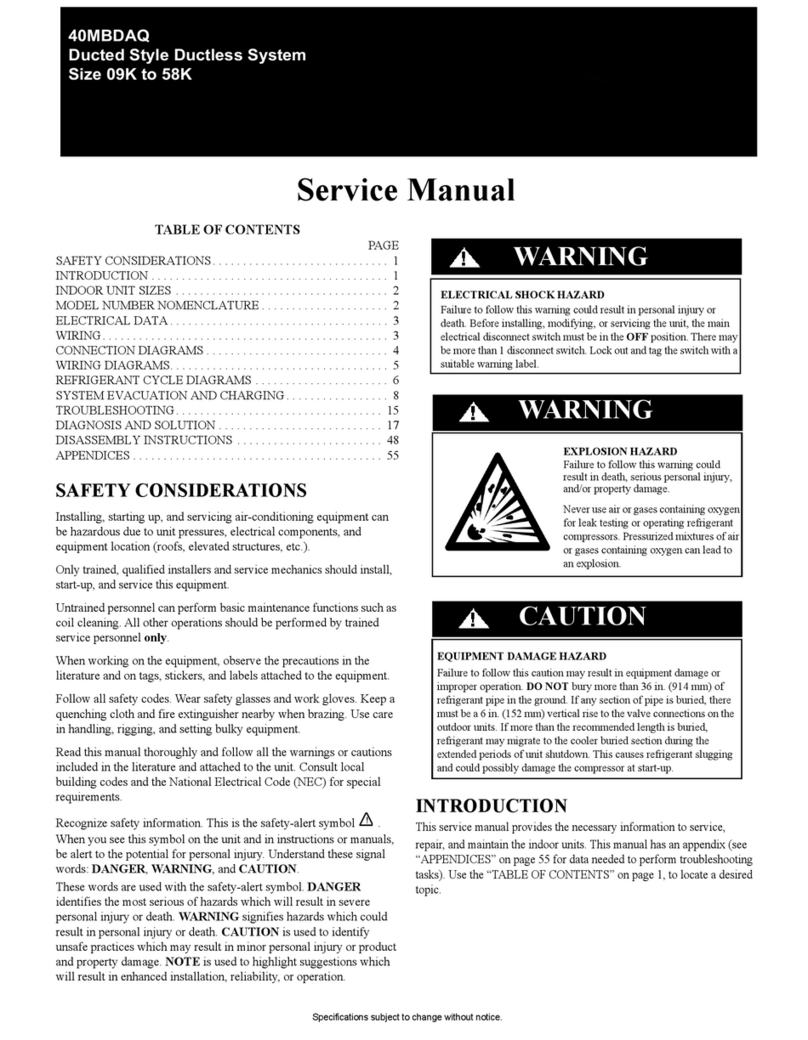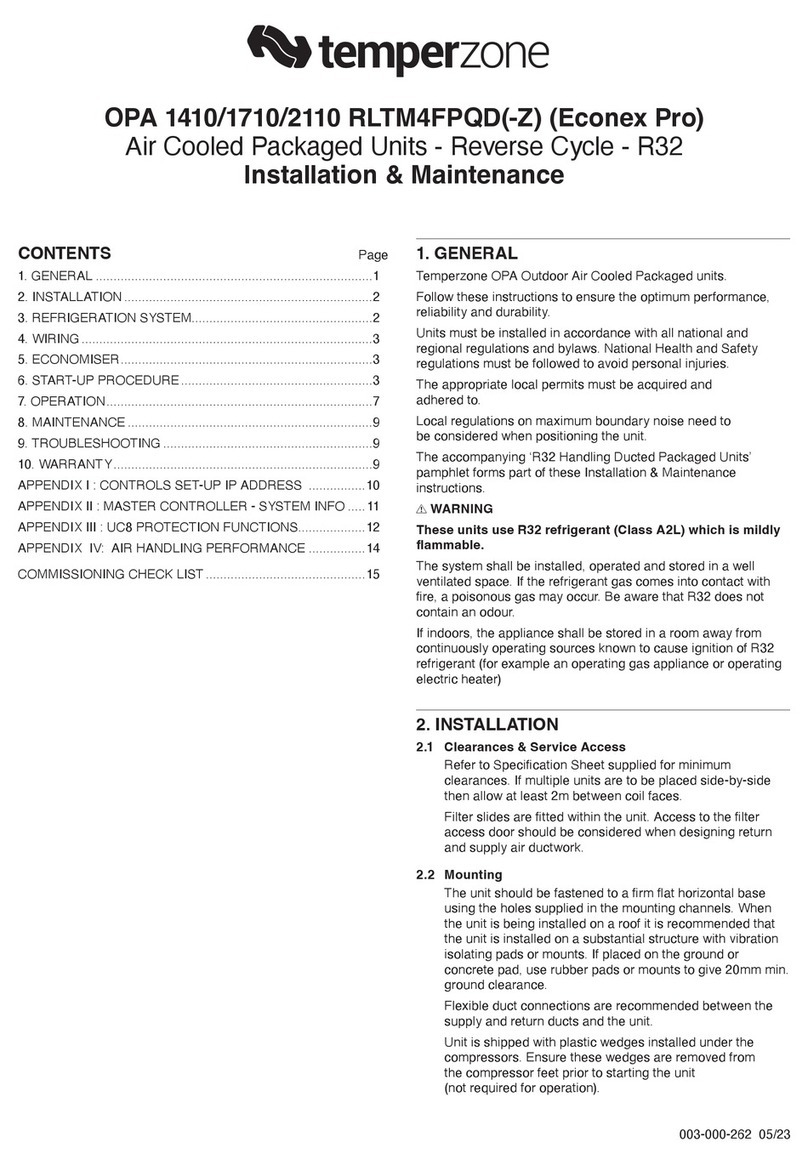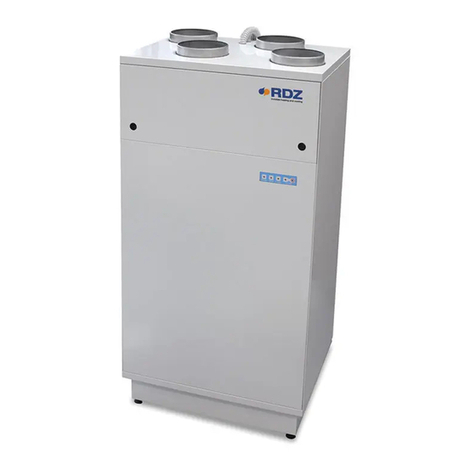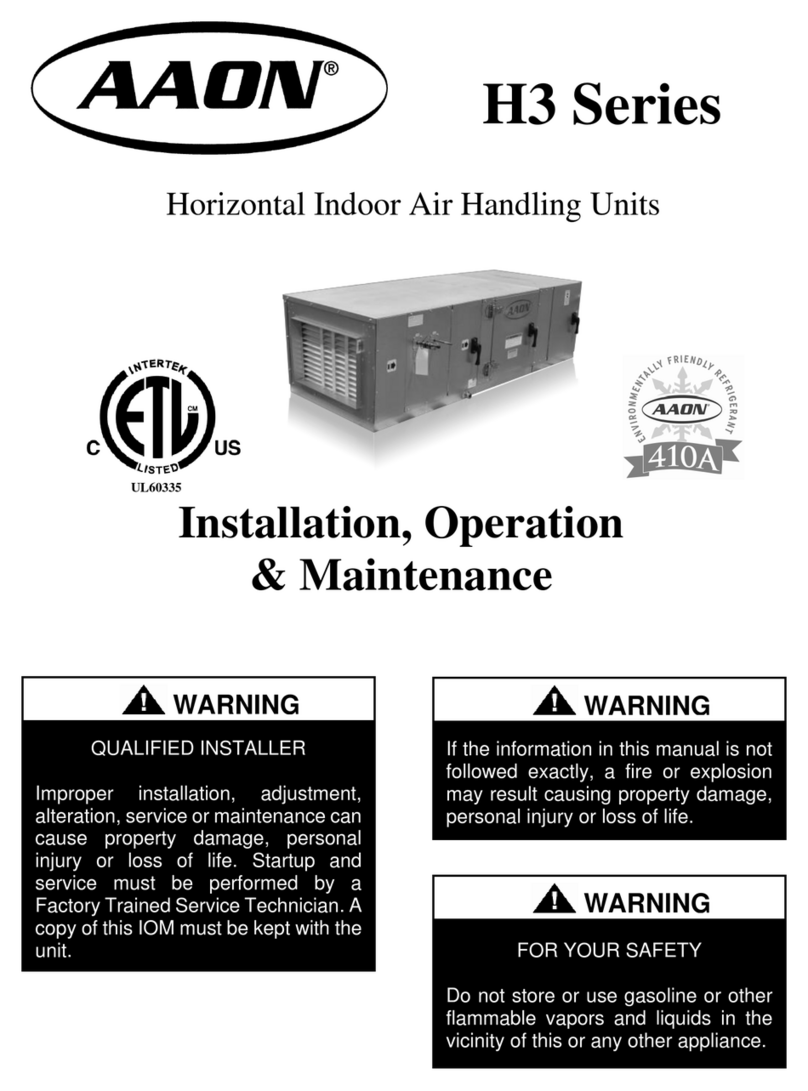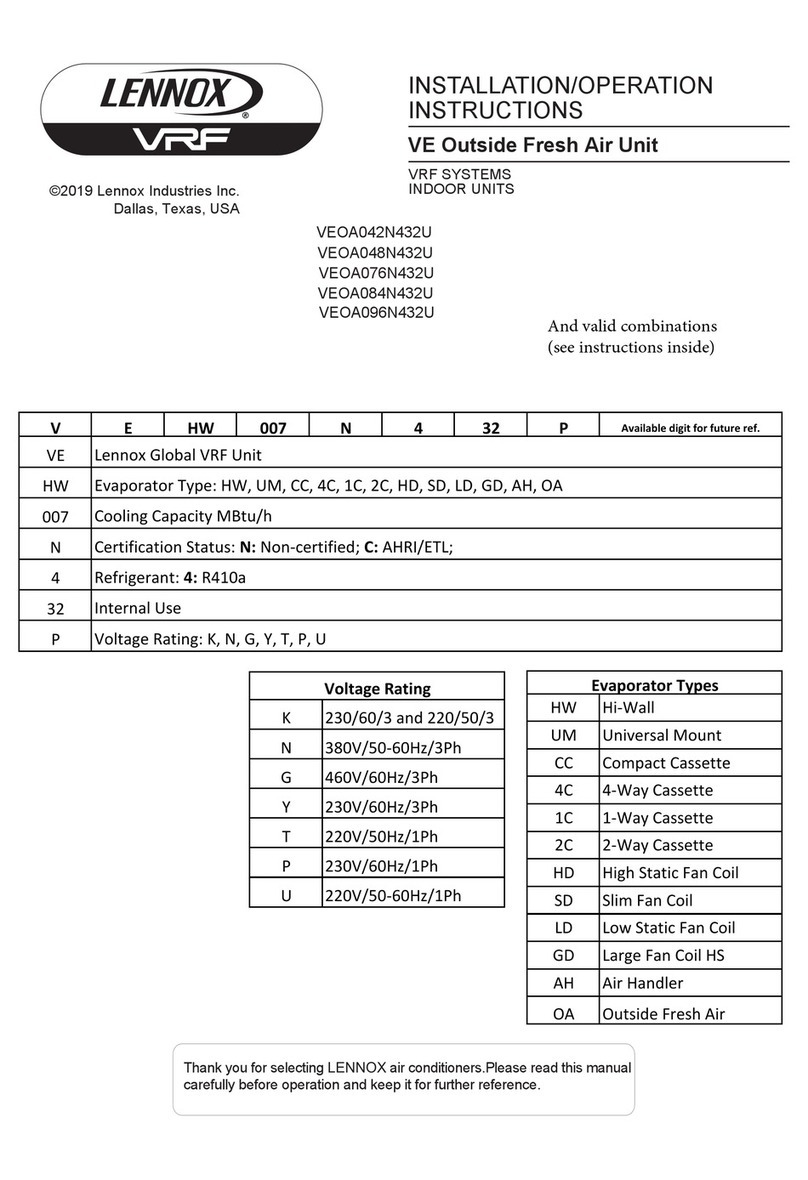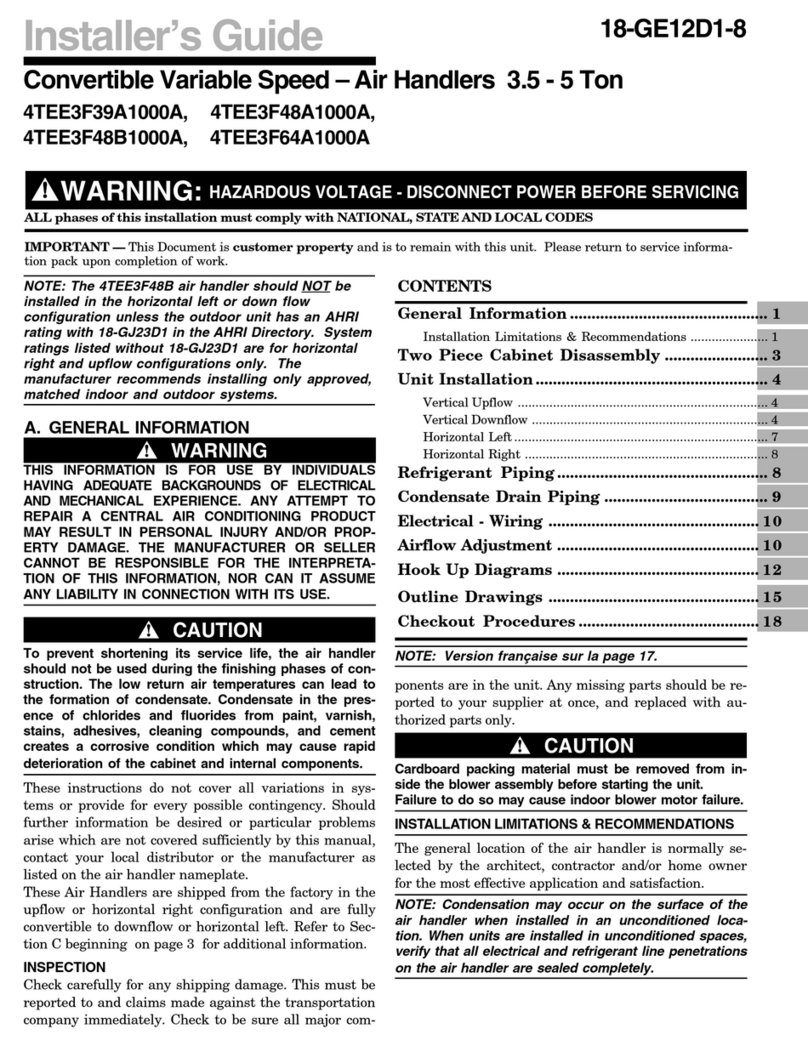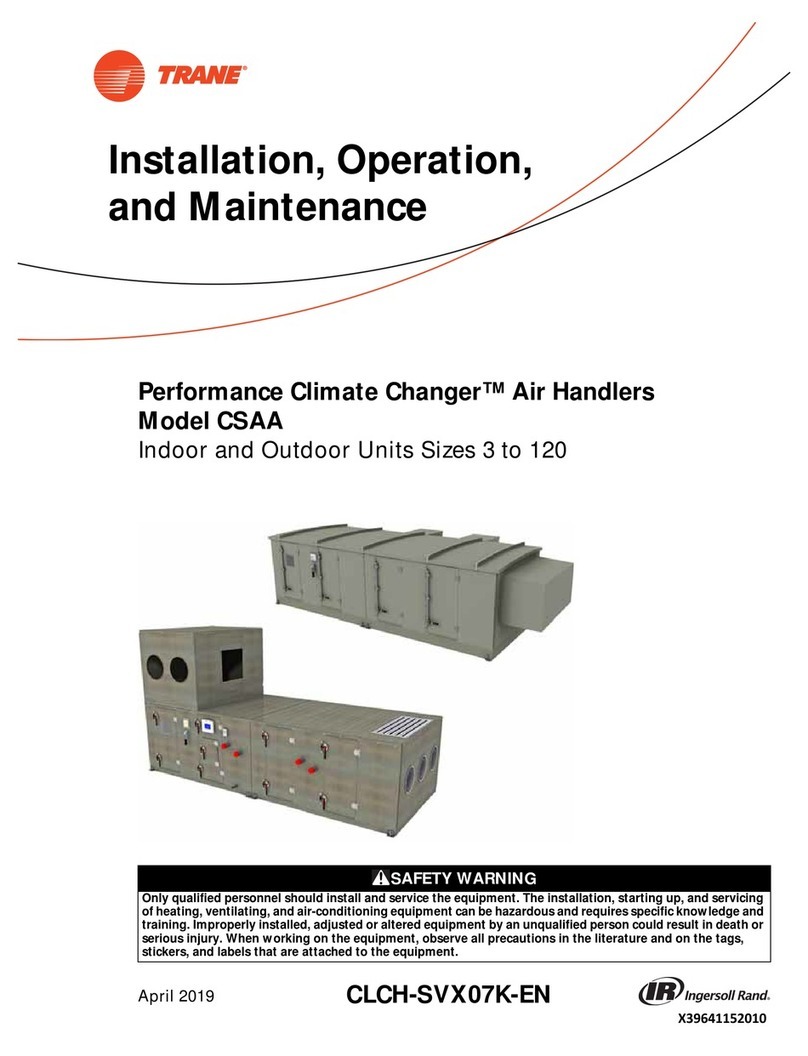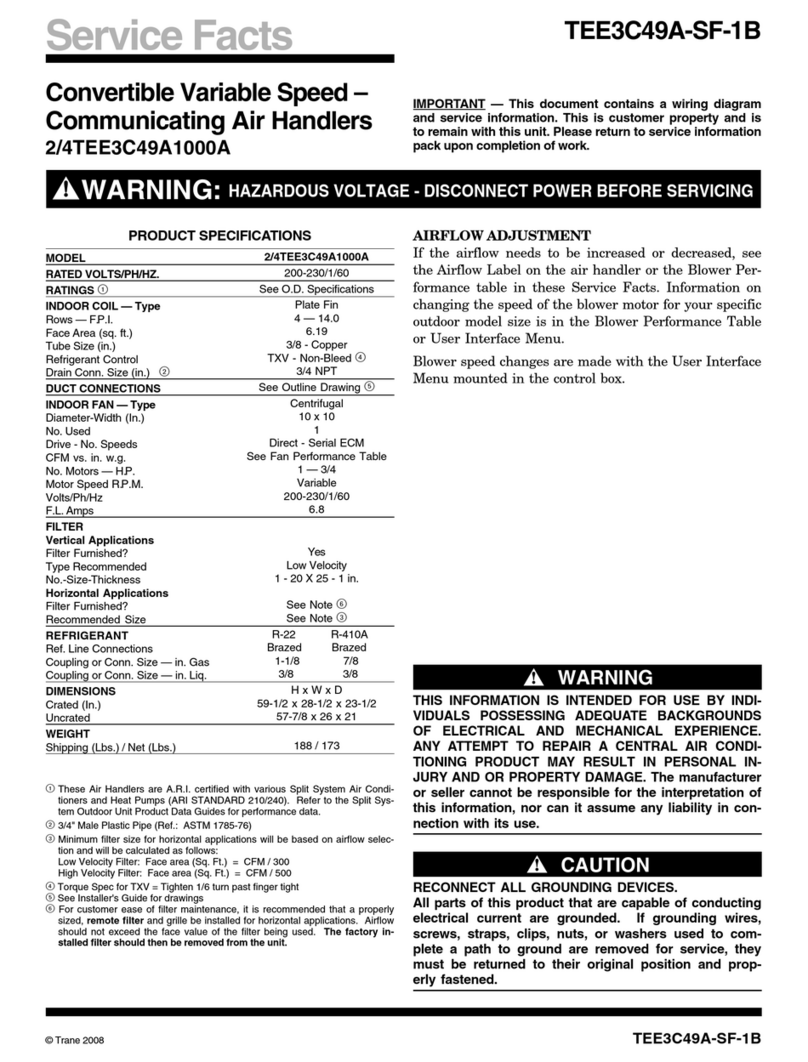
15
14
Assembly & Installation Assembly & Installation
Steam Coil Piping
Type A, AA Steam Coils
These are for central system, industrial
and process application with one row,
opposite-end connections. Maximum
standard operating limits:
Copper tubes: 100 psig and 400oF
Type AA coils feeds alternate tubes.
Refer to Figure 13 for typical steam coil
piping.
CAUTION
Condensate must flow freely from
coil at all times to prevent physical
coil damage from water hammer,
unequal thermal stresses, freeze-up
and/or corrosion.
Complete the following recom-
mendations to prevent coil damage.
1. lnstall a 1/2 inch, 15 degree swing
check vacuum breaker in the
unused condensate return tapping
as close as possible to the coil.
2. Vent the vacuum breaker line to the
atmosphere or connect it to the
return main at the discharge side of
the steam trap.
Note: Vacuum breaker relief is
mandatory when the coil is controlled
by a modulating steam supply or a two-
Position (ON-OFF) automatic steam
supply valve.
3. Run the return pipe at the full size of
the steam trap connection except for
the short nipple screwed directly
into the coil condensate connection.
Do not bush or reduce the coil return
tapping size.
4. Proper steam trap selection and
installation is necessary for
satisfactory coil performance and
service life. For installation, use the
Following steps:
Select trap based on maximum
possible condensate rate.
Locate the steam trap discharge at
least 12 inches below the
condensate return tapping, this
provides sufficient hydrostatic
head pressure to overcome trap
losses and assure complete
condensate removal.
Float and thermostatic traps are
recommended because of gravity
drain and continuos discharge
operation.
Use float and thermostatic traps
are recommended because of
gravity drain and continuos
discharge operation.
Use float and thermostatic traps
with atmospheric pressure gravity
condensate return, with automatic
control or where the possibility of
low-pressure supply steam exists.
Use bucket traps ONLY when the
supply steams in unmodulated
and 25 psig or higher.
Always install strainers as close
as possible to the inlet side of the
trap. Do not modulate Type A, AA
coils. Use two position (ON-OFF)
steam supply controls.
●
●
●
●
●
●
●
CAUTION
Caution: Always open the steam
supply control valve slowly to
prevent possible coil damage.
6. Do not modulate systems with
overhead or pressurized returns
unless the condensate is drained
by gravity to a receiver (vented to
the atmosphere) and returned to
the main by a condensate pump.
7. At start-up on units with fresh air
dampers, slowly turn the steam on
full at least 10 minutes before
opening the fresh air.
8. Pitch all supply and return steam
piping down minimum of 1-inch
per 10 feet in the direction of flow.
9. Do not drain the steam mains or
take-off through the coils. Drain the
mains ahead of the coils through
a steam trap to the return line.
10. Overhead return require 1 psig of
pressure at the steam trap
discharge for each 2 - feet
elevation to assure continuous
condensate removal.
5. Use a V-port modulating valve to
obtain gradual modulating action.
Figure 13
Typical Piping for Steam Coil
AV - Automatic or manual air vent MV - Magnetic valve
GV - Gate valve FT - Float and thermostatic steam trap
VB - Vacuum breaker ST - Strainer 21
OV - Automatic two-position control valve
3
LEVEL
AIR FLOW
STEAM
SUPPLY
MAIN
COWDENSATE
RETURN MAIN
1,2
OV.4 ST
GV.B
9
VB
12″MIM
11
GV ST
FT.3
1,2
9
Chilled Water
Piping - Coil Connection
General Coil Piping Recommendation
Refer to Figure 11 for typical cooling /
heating and steam coil piping.
Proper installation, piping and trapping
is necessary to assure satisfactory coil
operation and to prevent operational
damage. Water inlet and outlet
connections protrude through the coil
section side panel. Follow standard
piping practices when piping to the
coil. Note the following:
1. Support all piping independently of
the coils.
2. Provide swing joints or flexible
fittings in all connections that are
adjacent heating coils in order to
absorb thermal expansion and
contraction strains.
3. When attaching piping to the coil
header, make the connection only
tight enough to prevent leaks, the
maximum recommended torque is
200ft-lbs.
4. Teflon tape or teflon piping
compound should not be used
because of its high lubricity, teflon
makes it easier to tighten the pipe
to the header joint past the point
where an effective seal is created,
thus damage to the coil could result.
5. "White Zinc" compound / pipe
sealer on all threaded connection is
Recommended, instead.
Figure 11
Typical Piping for Water Coil
NOTE: DRAIN AND VENT CON-
NECTIONS ARE PROVIDED AS
STANDARD ON COIL HEADERS.
IF EXTENDED DRAINS AND VENTS
ARE REQUIRED, THEY MUST BE
FIELD PROVIDED.
IMPORTANT
To avoid damaging the coil
connections it is essential to grip
the pipe connection whilst
applying counter pressure to
tighten the joint (see Figure 12).
Use “Back-up wrench”when
attaching piping to coils, on
threaded connections. Figure 12
Completely stress-free
connections are essential. The
pipework of the coils should be
arranged to facilitate easy
removal of the coil for any
required maintenance purposes.
3
LEVEL
AIR FLOW
DRAIN
1,2
1,2
AV
AV
GV
GV
MV-2
45′ELL
WATER SUPPLY
MAIN
AV-Automatic or manual air vent
GV-Magnetic vaive
MV-Gate valve
WATER RETURN
MAIN

